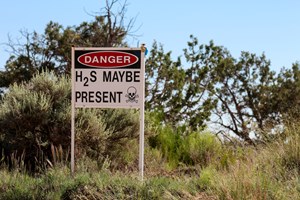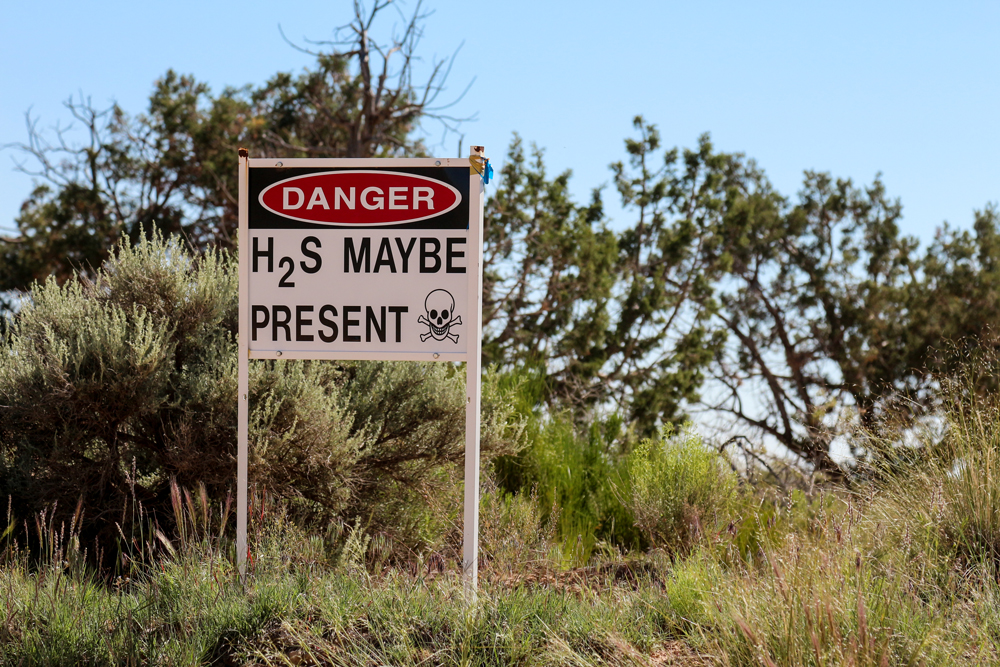JAMES JUNKIN, Chairman, Strategic Advisory Board, Veriforce
The oil and gas industry faced a sobering reality check in October 2019 when Jacob Dean, a worker at the site, responded to a routine pump alarm at an Aghorn Operating facility in Texas’ Permian basin. What followed was anything but routine. Dean was exposed to fatal concentrations of hydrogen sulfide (H2S) gas. When his wife, Natalee, entered the facility searching for him, she, too, fell victim to the invisible killer.
This double tragedy recently resulted in significant consequences: On April 15, 2025, Aghorn Operating Inc. was found responsible for safety failures under the Clean Air Act and OSHA standards, receiving a $1 million fine in addition to regulatory penalties against its operations. Aghorn’s vice president, Trent Day, pleaded guilty to criminal charges stemming from the Deans’ deaths and received a five-month prison sentence, while Kodiak Roustabout Inc., a services company involved in the situation, was fined $400,000 for its part in the case.

Fig. 1. H2S monitors at the Aghorn facility failed to warn of deadly gas levels.
As safety professionals, we need to understand what went wrong and how to prevent similar incidents in the future.
THE SILENT ASSASSIN IN OIL & GAS OPERATIONS
Hydrogen sulfide, often referred to as sour gas, creates unique challenges that require specialized safety approaches. This colorless, invisible gas naturally occurs in many oil and gas reserves and can rapidly accumulate in confined spaces at drill sites, wells, and processing facilities.
What makes H₂S particularly dangerous is its ability to overwhelm the senses, causing rapid incapacitation that prevents escape. At the Aghorn facility, malfunctioning H₂S monitors provided no warning of deadly gas levels, highlighting the risks of relying solely on equipment that can fail, Fig. 1.
Perhaps most concerning is how H₂S exposure symptoms can be delayed and easily mistaken for common environmental irritants. This deceptive characteristic makes timely recognition difficult, often with devastating results.
WHEN SAFETY STANDARDS FALL SHORT

Fig. 2. Despite regulatory requirements, two deaths still occurred at the facility.
The Aghorn case reveals important gaps in safety practices. Despite requirements from the Railroad Commission of Texas and the Texas Commission on Environmental Quality, including warning signage, alarm systems, and personal monitoring equipment, two preventable deaths still occurred, Fig. 2.
This raises important questions about how we implement and verify safety measures. A 2022 Earthworks report identified at least ten additional Texas oilfield worker deaths from H₂S exposure since the Deans’ tragedy, suggesting this is an industry-wide challenge, rather than an isolated incident.
Safety advocate Sharon Wilson points out that “existing data is likely undercounting the problem because worker health is not tracked long-term for signs of exposure.” This highlights a concerning reality: our current approach may address symptoms, rather than root causes.
PERSONAL RESPONSIBILITY: A TURNING POINT
The Aghorn case represents an important shift in how the oil and gas industry views responsibility for safety. When Jeffrey Hall, assistant administrator of the Environmental Protection Agency’s Office of Enforcement and Compliance Assurance, emphasized that those responsible for the deaths would face consequences for their actions, he signaled that safety failures now carry personal implications for decision-makers.
Day’s prison sentence sends a clear message that responsibility for worker safety extends beyond company policies to individual leadership decisions. This development should prompt every manager and executive to reconsider how they prioritize and resource safety programs.
BUILDING A CULTURE THAT PREVENTS TRAGEDIES

Fig. 3. From leadership to frontline levels, a strong safety culture must be maintained.
The most valuable lesson from the Aghorn case is that following safety rules alone cannot prevent disasters. What’s needed is a fundamental shift in how the industry approaches safety culture.
A strong safety culture must be present at all organizational levels, from leadership to frontline workers, Fig.3. This means making safety training a priority, regularly reviewing procedures, and creating environments where workers can report concerns without hesitation.
The ANSI/ASSP Z390.1-2024 standard offers an excellent framework for comprehensive H₂S safety training, covering hazard identification, emergency response procedures, proper PPE use, regular skill assessments, and effective communication.
When properly implemented, such training delivers real benefits: greater hazard awareness, better emergency response capabilities, fewer workplace incidents, improved employee morale, and more effective long-term health monitoring.
MOVING FORWARD: FROM COMPLIANCE TO COMMITMENT
The Aghorn case should serve as a wake-up call for the oil and gas industry. We need to move beyond viewing safety as just another requirement and instead embrace it as a core value that protects our most important asset—our people.
This transformation starts with leadership that aligns decisions with best safety practices throughout operations. When management demonstrates genuine commitment to safety, employees naturally follow suit, creating a positive cycle of continuous improvement.
As we consider the unnecessary deaths of Jacob and Natalee Dean, let’s commit to preventing similar tragedies through better safety protocols, stronger organizational culture, and more comprehensive training. The true measure of our industry’s progress will be not just in improved statistics, but in workers who return home safely to their families each day.

JAMES JUNKIN is a noted author on safety topics and the CEO and co-founder of Mariner-Gulf Consulting & Services, LLC, a risk management and occupational safety and health consulting firm, specializing in safety regulations, training, management systems, serious injury and fatality investigations, OSHA inspection representation, and EHS program implementation. He is also CEO of the Strategic Advisory Board at Veriforce. A much-sought-after Veriforce Master Trainer, Mr. Junkin has taught over 40,000 students and trained over 3,000 instructors. He is the chair of Professional Safety journal’s editorial review board. He is Columbia Southern University’s 2022 Safety Professional of the Year (Runner Up), a 2023 recipient of the National Association of Environmental Management’s (NAEM) 30 over 30 Award for excellence in the practice of occupational safety and health and sustainability, the American Society of Safety Professionals (ASSP) 2024 Safety Professional of the Year for Training and Communications, and the recipient of the ASSP 2023-2024 Charles V. Culberson award.
Related Articles
FROM THE ARCHIVE

